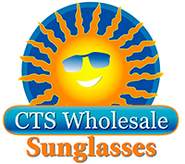Skiing Goggles - How To Choose The Best Downhill Skiing Goggles
21st Nov 2012
Whether you are an advanced skier or even a beginner, it is important to always wear two things, your helmet and a good pair of goggles, which will help to make sure your eyes are shielded from the elements. They should not only have lenses designed to enhance contrast, making it easier to recognize objects, bumps and icy patches in the snow, but they should also fit properly to help improve your performance and your enjoyment wherever you ski.
 Skiing goggles have large lenses designed to fit snugly around the eyes to provide a wide field of vision and are held in place with a large, thick strap around the back that adjusts to fit most head sizes. The most popular frames made from soft, flexible nylon, rubber and propionate materials are designed to hold their shape in cold temperatures with cable or wraparound temples that keep frames firmly in place. Side shields that help keep wind and snow away from eyes are an important frame feature to look for.
Skiing goggles have large lenses designed to fit snugly around the eyes to provide a wide field of vision and are held in place with a large, thick strap around the back that adjusts to fit most head sizes. The most popular frames made from soft, flexible nylon, rubber and propionate materials are designed to hold their shape in cold temperatures with cable or wraparound temples that keep frames firmly in place. Side shields that help keep wind and snow away from eyes are an important frame feature to look for.
The lens colors of skiing goggles are created to suit various lighting conditions on the slopes. For example, darkly tinted lenses are best when the snow's reflection is brightest. Orange, reddish orange and yellow lenses work well for overcast conditions, while clear lenses offer better visibility for night skiing. Some manufacturers even provide interchangeable lenses, allowing the wearer to change the goggle lens to adapt to shifting weather patterns and light conditions. Wearers can choose either flat lenses or more rounded shapes which provide greater peripheral vision so skiers only need to move their eyes from side to side rather than turning their head when traveling downhill at high speeds.
The large, one-piece design permits skiing goggles to be worn easily over contact lenses and can also fit over many prescription glasses or sunglasses by holding the arms of the glasses comfortably and securely in place. More expensive prescription optical inserts can also be made to fit between the eyes and the goggle lenses.
When choosing the best downhill skiing goggles, look for ones made of lightweight, impact resistant polycarbonate lenses that block 100% of UVA/UVB rays to protect eyes from the glare of sun and snow and provide good ventilation. A thin foam that seals the goggle at the top and bottom to help prevent snow from getting inside while allowing air to circulate within the goggle will increase visibility and reduce fogging at any elevation.
